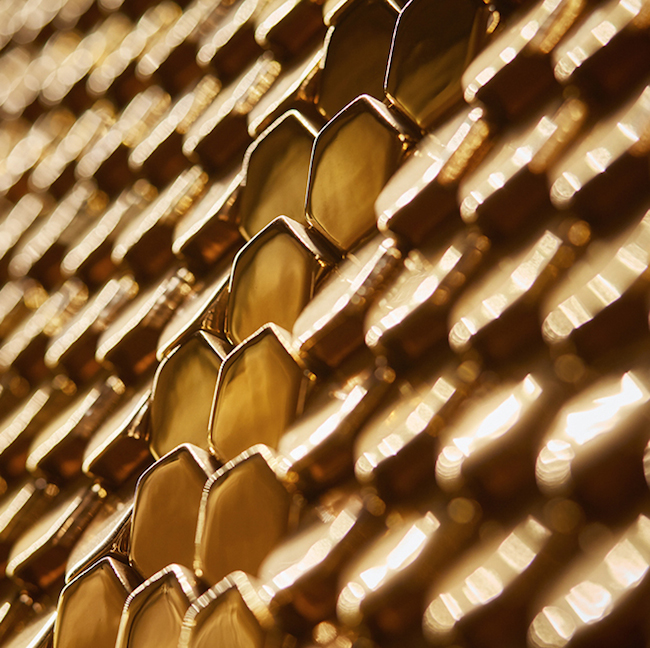London-based designer Giles Miller is interested in light, reflection, texture and how those three elements, in combination, can create artwork across a surface. Miller states that the studio arranges thousands of tiny sculptural components “in such a way that they illustrate imagery purely through their composition and reflection of the surrounding light.”
That style is evident with Miller’s installation at Le Lido, a world-famous cabaret and burlesque show in Paris. Thousands of hexagonal ceramic tiles, glossy and golden, catch the light and turn it into a wave that rolls through Le Lido’s hallway. It’s bold and maybe a little ostentatious, but then again so is the show.

The video and images included here show you exactly how that effect was achieved by Miller. The tile, honeycombed as it is across a surface, is set at different angles. Arrangements of a few hundred mirror-like tiles point away from their neighbors, sending the light ricocheting in a different direction, moving with the viewer as she walks. Miller says of the work:
Being commissioned by this iconic Parisian venue to add a signature piece to their new fit out is a true honour for a British creative studio, and the result is an application of GMS’s ceramic hexagonal tile that shows the concept in its best and truest form.
Combining geometric gradients with bold graphics the high gloss golden tile is angled facing in different directions so that the pattern work is shown purely through the light and movement surrounding the wall.
Miller’s studio has also worked with British Airways, Omega Watches, Piper-Heidsieck Champagne, the London Design Museum and others. You can see similar tile and light projects with Miller’s work for Design Days Dubai, the Dubai Mall, the Ritz-Carlton in Singapore and “Brass Collection,” one of his earliest surface projects.
What do you think of Miller’s contemporary ceramic art and architecture? Let us know in the comments.






So simple and so amazing!
Love this! Very effective and I appreciate the immersive reflective sense of seeing yourself or the performers fragmented into movement and varying perspectives.
As a ceramist I would sure love to know what glaze they use. I used to be able to get this effect with leaded glazes but now it seems those days are gone at least here in the U.S. Or did they perhaps use gold lustre? That seems a bit extreme given the size of the project.